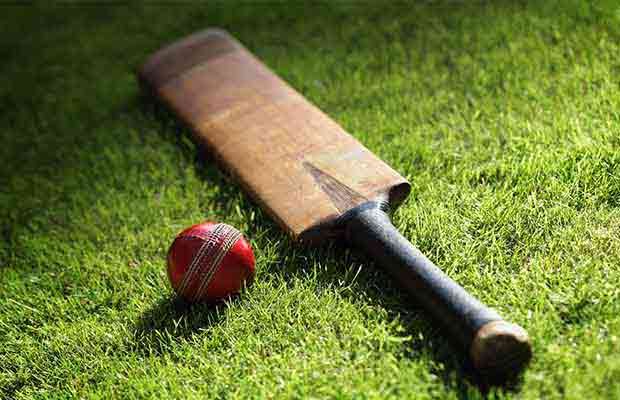How to play cricket – Cricket Rules and Regulations | ICC Rules of Cricket

Popularly known as gentleman’s game cricket is one of the most followed sports all over the world.It’s popularity spans across 6 centuries, 5 continents and a well over a hundred nations.The most beautiful aspect of this sport is that it is as thrilling to watch as it is to play.Like every sport is played under a set of rules, cricket is no exception.In fact, these cricket rules make it such an interesting sport.No sport in the world can survive without rules.If there are no rules then one can not move even a single step in any sport at any level whether it is international or just playing in the streets and the only thing that will be left behind is confusion and chaos.In this article, I will try to cover the common cricket rules that every individual must be aware of while playing it just in order to make the game simpler and without fights.Believe me, a lot of fights happen in India while playing cricket over the rules as everyone in this country is an “expert” of the game.So without wasting any more time let’s take a look at some of the cricket rules which are set by the governing body of the game.
PLAYING ENVIRONMENT- TEAM, PLAYERS, DURATION etc.
- TEAM
Cricket is basically a battle between bat and ball.This game is played between two teams, consisting of 11 players each.Each player is assigned a specific role i.e batting and bowling and one player act as a specialist wicket-keeper.Each team is assigned an extra player known as the 12th man in case a player is not able to continue the game due to an injury.However, the 12th man is not allowed to bat, ball or keep wickets.It is an outdoor sport played on a cricket field or a large ground.The centre of action is a 22-yard long rectangular surface known as the cricket pitch.While batting is done in the pair, all the eleven players of the bowling team field on the ground.
- OFFICIALS
There are two officials present on the field who officiate the game known as the umpires.Both umpires interchange their positions after each over.Their job is to give decisions and make sure that cricket rules are being followed by the players and the dignity of the game is not hampered.There is also a third umpire known by the same name who is sitting outside the field.When the on-field umpires are confused about a decision then they can refer it to the third umpire who uses TV replays and technology to give a fair decision.
In addition to it, there is also a match referee who deals with the issues such as fights while playing etc. and has the power to penalise any player including captain for breaching the cricket laws or spirit of the game.
- DURATION
The duration of a cricket varies according to the format.There are three formats in cricket.
TEST CRICKET
-It lasts for a maximum of five days.Each day is scheduled for 90 overs.Each team is given two innings i.e two times batting and two times bowling.There is not over limit for batting and a batting team can bat as long as it wants if it does not get all out and can declare their innings.
ODI (ONE DAY INTERNATIONAL)
– In this format, each team is given a maximum of 50 overs.
T20
– It is the shortest format lasting up to 20 overs per side.
NOTE-An over consists of 6 legitimate deliveries.It applies for all formats.
Irrespective of the format the basic cricket rules remain same.
GAMEPLAY
Note: Every department of cricket, whether it is batting or bowling is governed by respective cricket rules.
- TOSS
– A toss is done by flipping the coin and the winning captain is given the luxury to choose whether he wants to bat or ball first.
- AIM
– The aim of the whole game is to outscore your opponents.If you are batting first then you have to make sure that you restrict your opponent to at least a run less than your score and if you are batting second then you have to score at least a run more than your opponent’s score.
- BATTING
Two batsmen start the proceedings with both standing at the opposite end of the pitch.The job of batsmen is to score as many runs as possible without or before getting out.When a batsman gets out he is replaced by another batsman.
HOW TO SCORE RUNS
There are many ways the runs can be scored.The batsman has to hit the ball with his bat to score runs.Both batsmen have to run to each other’s end before the fielder throws the ball to the stumps to complete a single run.A batsman can run a maximum of 4 runs after hitting a shot.
A batsman can also score in boundaries (4’s and 6’s)
If a ball touches or goes over the boundary line after touching the ground a batsman is given 4 runs.
If a ball sails over the boundary line without touching the ground then a batsman is awarded 6 runs.
OTHER WAYS TO SCORE RUNS (EXTRAS)
NO BALL
A team gains one extra run if a bowler bowls a no ball and also it will not be considered a legitimate delivery and the bowler has to bowl it again.The ball after no ball is a FREE HIT which means that the batsman cannot get out by any means except run-out.
A no ball is declared when :
- A bowler oversteps his bowling crease.( If front foot of bowler lands behind the crease and later skits outside the crease then it is not regarded as a no ball.A ball is called no ball only if the foot lands outside the crease)
- Bowls a full toss above waist height.
- A fielder’s position is violating the cricket rules
- A bowler bowls more bouncer in an over than the allowed limit.(A maximum of two bouncers per over are allowed)
WIDE BALL
Penality– Opposition team gains an extra run and the bowler has to bowl that delivery again.
A ball is a wide ball if a bowler has bowled it too far away from batsman’s reach.
BYE
If a batsman runs without hitting the ball.They can run up to a maximum of 4 runs as a bye.
LEG BYE
If a ball hit a batsman’s pads then also they can run off that deliver.Such runs are known as the leg bye.Again a batsman can run up to a maximum of 4 runs as the leg bye.
Extra runs are credited to the team’s total score and not the batsman’s individual score.
- BOWLING
The aim of the bowling team is to take all 10 wickets of the batting team and to restrict them to as fewer runs as possible.There is no limit of overs a bowler can bowl in test cricket.But in ODI’s a bowler can bowl a maximum of 10 overs and in T20’s a maximum of 4 overs.A captain can use as many bowlers he likes from the playing eleven.There are many ways a batsman can get out:
BOWLED
If a bowler is bowling and the ball hits the stumps and at least one bail is knocked off then the batsman is bowled out.It doesn’t matter if the bowl has touched a batsman’s bat or any body part before hitting the stumps.
CAUGHT
If a batsman touches the ball with his bat or glove and any of the fielding team players catches it before it can touch the ground then the batsman is caught out.Even if the ball touches any body part of batsman after hitting the bat the batsman is still out as long as it does not come in contact with the ground.

Catch Out
STUMPED
If the ball passes the striking batsman and he is out of his batting crease then the keeper can knock off the stumps and the batsman has to go back to the pavilion.
LEG BEFORE WICKET (LBW)
If a ball hits a batsman’s pads in the line of the stumps without hitting the bat then the batsman is judged LBW out.
RUN OUT
If a fielder disturbs the stumps with the ball before a batsman can complete a run then he gets run out.
HIT WICKET
If a batsman disturbs the stumps with his bat or body part or any other equipment (cap or helmet) while playing a shot.
HANDLING THE BALL
If a batsman touches the ball with the hand without the consent of opposition.
WIN/LOSE/TIE/DRAW
As mentioned earlier the aim of the game is to outscore your opponent.The team scoring more wins the match.It applies to limited overs format (ODI’s and T20’s).It doesn’t matter if a team gets all out or not as long it has scored more runs than their opponent.
However, in test cricket, a team can draw a test match even if it fails to chase down the required target provided it does not lose all 10 wickets.If batsmen can survive the last day without getting all out then the match is declared as a draw even if they are not able to chase down the target.
If both teams finish with the same score then the match is considered as a tie (in limited overs format) and in test cricket only if the chasing team gets all out on the same score as their opponents.
In T20 cricket if a match ends in a tie then a super over is held to determine the winner of the match.Each team is give one over to bat and bowl and one bowler is allowed to bowl that over and a maximum of three batsmen to bat ( when two batsmen get out the innings is finished).
These were a few basic cricket rules every individual must be aware with if they want to play this beautiful game in a fair manner.
















